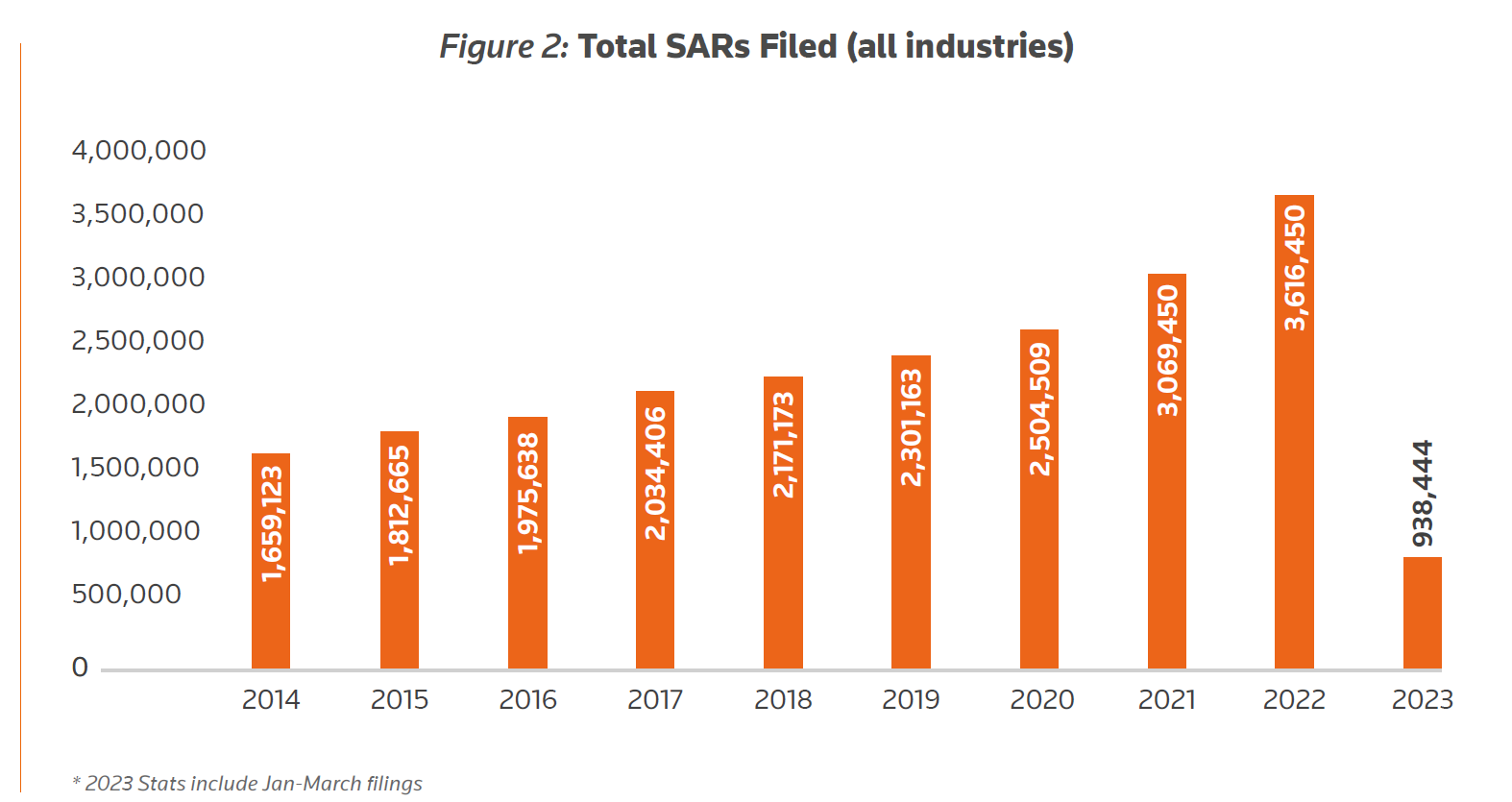The volume of Suspicious Activity Reports (SARs) filed by U.S. financial institutions has surged amid a pandemic-era increase in fraud, our new report shows
Financial institutions operating in the United States are filing soaring numbers of Suspicious Activity Reports (SARs), with the total number of SARs filed in 2022 surpassing 3.6 million filings, an increase of 57% from pre-pandemic 2019 levels.
More importantly, based on current predictions, SARs are on pace for another record year of filings in 2023.
To delve into this development further, the Thomson Reuters Institute has compiled a special report based on analysis of public data released by the U.S. Treasury Department’s anti-money laundering (AML) unit, FinCEN, that provides a closer look at the trends, many of which were driven by pervasive fraud during the pandemic crisis.
As the report demonstrates, SARs filings soared in virtually all categories. However, massive spikes in human exploitation, elder fraud, and government-related benefit scams are noteworthy. Such vulnerable populations have grown in both size and susceptibility, especially among migrants and the elderly.
Suspicious Activity Reports 2023
Although some attribute the spike in filings to technology improvements that are better at detecting suspicious activity and numerous regulatory warnings that have stressed the importance of filing SARs, actual increases in crime reported by other agencies, such as the Federal Bureau of Investigation (FBI), closely correlate with the sharp increases in actual fraud in many categories.
Some skeptics argue that so-called defensive SAR filings — those filed when a financial institution may not truly believe flagged activity is tied to crime but wants to shield itself from potential regulatory criticism — have driven the growth in SAR numbers. However, the latest numbers and the report paint a much larger, more nuanced picture.
In addition to the pandemic-driven causes, check fraud and other payment-related frauds are surging, according to the data. The report also highlights important seasonal trends over the past nine years that show how January and February typically reflect below-average SAR filing volumes, while late spring and late summer were often particularly busy.
The report relies on data from January 2014 through the end of the first quarter of 2023 and was obtained from the FinCEN SARs database. The data is a helpful benchmark for financial institutions’ risk, compliance, and anti-fraud leaders. It can be used to contrast their internal data against the broader market-affecting industry peers.
Numerous published regulatory red flags or warnings in critical areas such as elder fraud, postal fraud, check fraud, and human exploitation are also included in the report. The information is useful to help firms better identify and report suspicious transactions.
The data in the report can be used for budgeting, planning, and comparison purposes and presentations by AML, sanctions, and financial crimes departments to their organizations’ senior management and boards of directors.
As the report notes, failure to report such suspicious activity by financial institutions often can result in steep penalties. More importantly, such failures can have life-and-death implications because the information enables law enforcement to uncover and prosecute such illegal activity.








